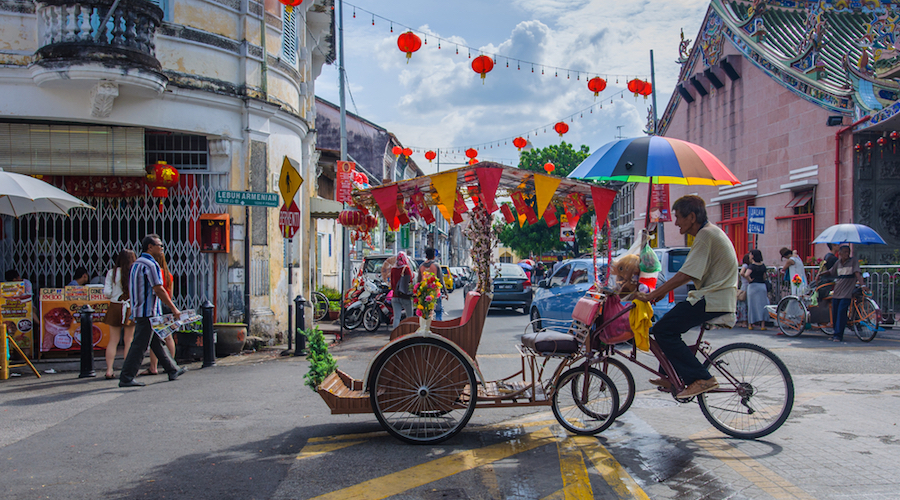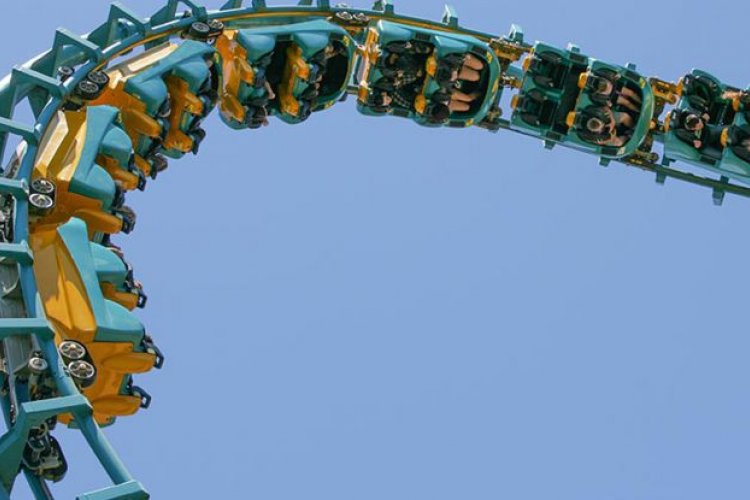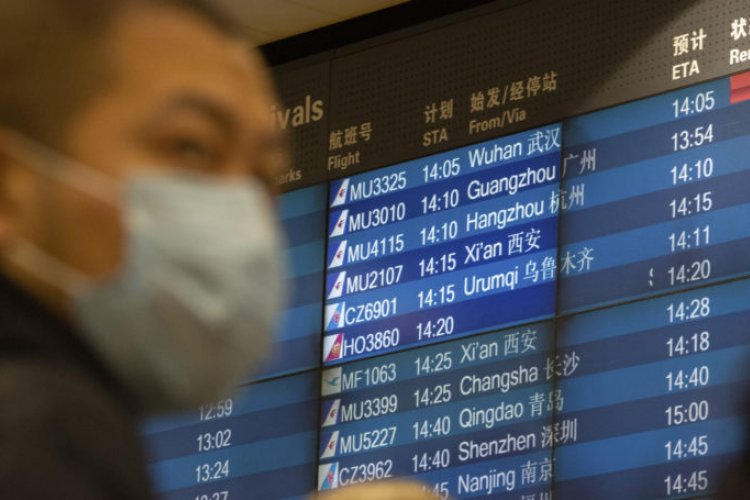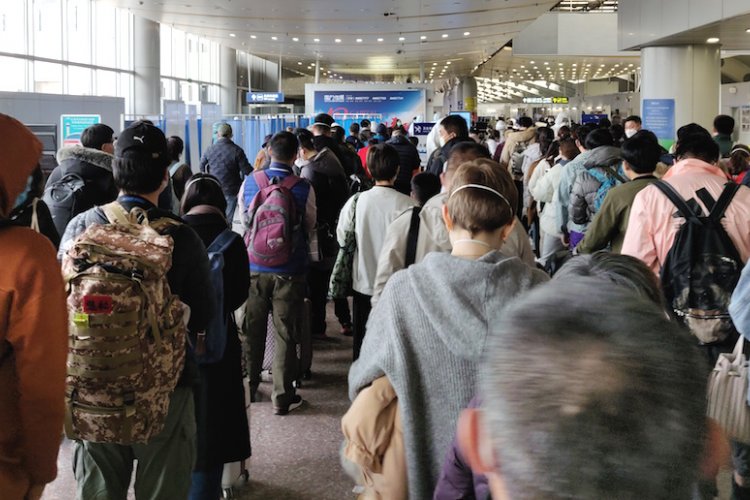George Town: Eat Your Way Around Penang's Multicultural Capital
Fascinating, heritage-rich George Town, the capital of the Malaysian state of Penang (which includes both the island of Penang and a portion of the mainland), is the perfect destination for those searching for a mix of history and culture. Penang's prime position along trading routes through the Malacca Strait has left it with a vibrant mix of local Malay, Chinese, and Indian cultures, as well as plenty of British colonial architecture. Penang also has a well-earned reputation as the gastronomic capital of Malaysia, if not Asia, thanks to its multicultural food scene.
George Town is a great destination for a long weekend break from Beijing; three to four days will be more than enough time to eat your fill of the excellent street food and explore some of the rest of the island. There are no direct flights to Penang from Beijing but multiple airlines fly via Kuala Lumpur, Hong Kong, or Guangzhou, for a total journey time of around 8-10 hours.
What to do
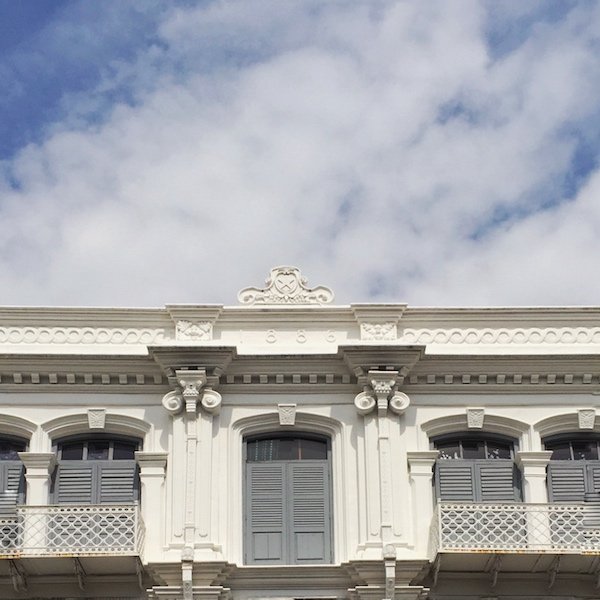
The best way to get to know George Town is to simply wander around the city’s historic core, which was designated a UNESCO World Heritage Site in 2008. This includes colonial landmarks in the oldest quarter of the city, such as Fort Cornwallis and the trade and customs buildings along Beach Street, as well as an eclectic mix of Chinese clan houses, Peranakan mansions, Hindu temples, and Indian Muslim mosques. If you want more insight into the history of Penang, local NGO Penang Heritage Trust offers several different guided walking tours.
What to eat
Food is the highlight of any trip to Penang. There are restaurants and hawker stalls on every street corner and you will be hard-pressed to eat a bad meal; with so much competition, poor quality places don’t stay open for long. With that in mind, the best way to enjoy the food in Penang is to follow your nose to the busiest restaurants as you wander around – and plan to eat five to six meals a day rather than your usual three (seriously). That being said, there are still certain dishes that you should make it your mission to eat:
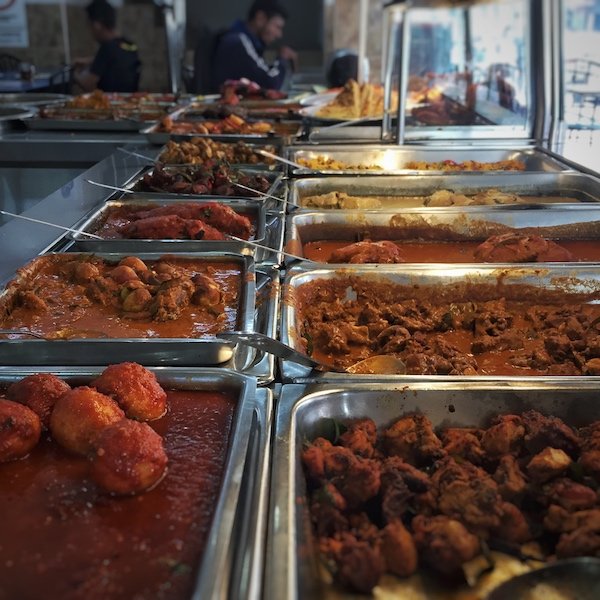
Char kway teow
Believed to have originated with the Teochew (or Chaozhou) community, these smoky stir-fried noodles are the very definition of “breath of the wok.” The dish has many interpretations but generally speaking, flat rice noodles are stir-fried with soy sauce, eggs, prawns, Chinese sausage, and bean sprouts.
Nasi kandar:
Nasi kandar (pictured above) is a meal of rice (plain or flavored like biriyani) served with a variety of meat and vegetable side dishes. Most nasi kandar restaurants spread out the dishes along a counter for you to peruse before choosing your favorites – think of it as the tastiest buffet you’ll ever have. Depending on where you go, you won’t have to spend more than a few dollars.
Penang Asam laksa (below)
If you love seafood, this one’s for you. Unlike the Singaporean-style laksa you may have tried elsewhere, Penang’s version has a strong, fishy soup base made with shrimp paste and mackerel and finished with chili, lemongrass, and sour tamarind. Try it at the venerable Joo Hooi Cafe.
Chendol
This icy dessert may look strange with its tangle of bright green noodles but it is a refreshing antidote to Penang's searing heat. To make it, shaved ice and the aforementioned noodles (which are made of rice flour jelly) are served with coconut milk and gula melaka (palm sugar syrup). One of the most popular chendol stalls is located in the alley next to Joo Hooi Cafe.

Where to stay
Penang abounds with boutique accommodation, with many hotels located in restored shophouses. For the best experience, especially if you’re taking a short trip, be sure to stay in the historic core of the city. Top of the accommodation tree is Seven Terraces, a thoughtfully renovated row of seven shophouses with sumptuous, colorful interiors, and all the beauty of a period Peranakan home with all the mod cons. For something a little easier on the wallet (but still a step above the two dollar hostel beds on Chulia Street) try Ryokan Muntri Boutique Hostel, a loosely Japanese-inspired “flashpacker” hostel with bright, clean dorms and bathroom areas, and a pleasant café and common area on the first floor. However, if money is no object, then it doesn’t get better than the Eastern and Oriental Hotel, which dates back to 1885 and was founded by the same brothers who launched Raffles Hotel in Singapore. In a prime seafront location, the elegant white building with its hardwood and white marble is nostalgic opulence at its best (be sure to shell out for a room in the Heritage Wing rather than the newer Victory Annexe).
Around the rest of Penang

With history and cuisine covered in George Town, the rest of the island completes Penang’s bid for “perfect holiday destination” with quiet beaches and pristine parks. The closest, if not necessarily the best beach is Batu Ferringhi, a one-hour bus ride away (take the 101 from Chulia Street in downtown George Town). This area is very developed, with plenty of resorts, bars and restaurants, and vendors on the beach offering water sports packages. If you're looking to stay in this area, our best pick is the Lone Pine Hotel, a charming boutique resort just steps from the beach. The rooms are huge and boast balconies with private plunge baths that overlook the ocean.

The quietest beaches, where you’re more likely to set your towel down next to a family of monkeys than a family of tourists, are along the island’s northwestern coast inside Penang National Park. The National Park is the smallest in Malaysia, spanning just 1,213 hectares, but still offers plenty of opportunities for trekking among the many varieties of tropical flora.
READ: The Travel Apps You Need for Your Asian Holiday
More stories by this author here.
Instagram: @gongbaobeijing
Twitter: @gongbaobeijing
Weibo: @宫保北京
Images: Shutterstock, Robynne Tindall

